Saint George's Episcopal Church
St. George's parish was founded in 1704 as part of the Church of England, and is the second oldest religious organization in Flushing. In 1746 the first church building was erected around the corner on Main Street. King George III granted the church a royal charter in 1761. An early rector of St. George's was Samuel Seabury, who became the first Bishop of the Episcopal Church in the United States. Francis Lewis, a signer of the Declaration of Independence, served as a vestryman and warden from 1769 to 1790. In the 19th century, St. George's founded two schools, the Flushing Academy and the Flushing Institute. Both of these schools were known for their academic excellence and attracted students from all over the country.
The current Gothic Revival building, erected in 1853-54, is a significant example of ecclesiological church architecture and is a rare surviving work of notable architects, Wills and Dudley. Ecclesiology was a philosophical reform movement that sought spiritual renewal by returning to the rituals and architectural forms of the medeval church. The building features two Tiffany stained glass windows. Later additions to the structure include an 1894 chancel wing and a 1907 neo-gothic parish house, designed by prominent architect Charles C. Haight. The graveyard contains gravestones and memorials dating from the late 18th and early 19th centuries. (NY Landmarks Preservation Foundation)
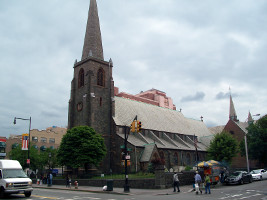
Saint George's Episcopal Church

Saint George's Episcopal Church
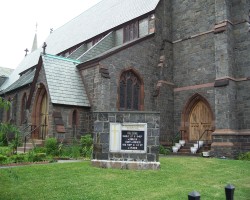
Saint George's Episcopal Church
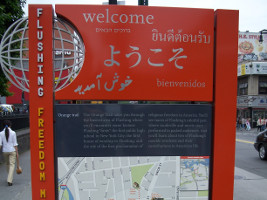
Flushing Freedom Mile marker
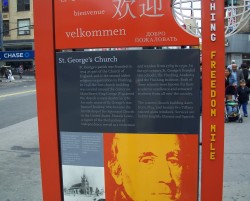
Flushing Freedom Mile marker

2000 landmark marker
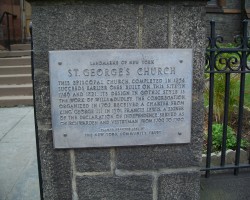
1961 landmark marker
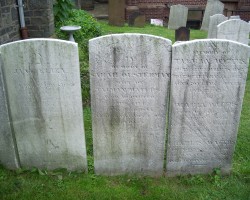
Jane Eliza Brush, Sarah Sterman, Taman Waters gravestones
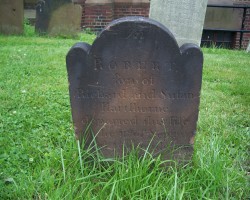
Robert Hartshorne (d. 1794) gravestone
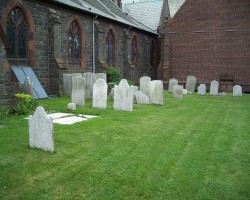
Graveyard